#hapa characters
Explore tagged Tumblr posts
Note
Besides American pop culture such as metal, is Miko a fan of the more traditional aspects of Japanese culture at all?
Hmm, this is a tricky question for me because I'm a born and raised American hapa. My half-Asian is Viet.
A lot of my thoughts for Miko were formed by conversations with a few Japanese exchange students, YouTube, Japanese language classes, online information, and what I would have liked to see from the show.
I'm going to be missing a lot of cultural context from a native perspective.
(That or I'm reading way too deep into this ask lol)
I really wish that we had more instances of culture clash or misunderstandings because it could have provided more depth to everyone by opening new dialogue and provided more context of the lore and character backgrounds.
As a character, Miko Nakadai comes off more like an American-born or as someone who's very comfortable in the U.S. from long-term exposure. Perhaps she has relatives in a different state? But then that opens more questions than answers. (It doesn't matter obsessed you're into a country or culture, the first hand experience is a shock.)
And it doesn't help she feels slap-dash in a way. She's vague in the sense that she has a lot of disconnected traits that don't really match up what we were given as viewers. It really isn't a surprise that she's a polarizing character.
Concept wise, the creators pulled a lot of inspiration from Harajuku fashion, so the colorful punk aesthetic does make sense in hindsight with the elements of Visual Kei and Kawaii. But that particular tidbit was released in the Transformers: Art of Prime book.
(As of now, it's nearly $5,000 on Amazon, but we have lovely people who may or may not share some pages online.)
It would have been so great if the show committed to the Japanese exchange student bit by giving more information about Miko's background besides her parents living in Tokyo. I know I made a comment about her parents are like Tatsu and Miku from Way of the Househusband, but that would have provided so much context on Miko's wildness and complete recklessness because the Vegas Effect can only explain so much. (It would make so much sense on how she went for the damn axe to wield against Soundwave! No hesitation from that girl!)
Shoot, even her favorite band, Slash Monkeys, is a Bulgarian rock band! There is nothing wrong with that, but give me/us a bone! Something minor, like a throwaway line about Japanese rock bands that did popular anime openings. (Y'all remember the grip the Big 3 had on our collective throats? Plus, the granddaddy of them all: Dragonball.) That could have built rapport, delved into cultural differences, and been a feel-good moment as the kids showed the 'bots different anime via movie night.
Bottom line, she confuses me on the same level as Orion Pax conundrum, so I just like doing things to make things make sense.
#ask#jacquehohenheim#transformers#transformers prime#tfp#miko nakadai#character design#character concept#analysis#cultural misunderstandings#culture clash#cultural differences#maccadam#my thoughts#sorry this is more like a rant than an answer#i know it's the same complaints but my god lads the clarity and lore we could have had!!#i know people shit on jack being boring and raf too gary stu but they make sense#except for Raf's immediate understanding of Bee's booping. like space alien visitors getting nasty and Unicron WAS RIGHT FUCKING THERE
45 notes
·
View notes
Text

Hiyoko reimagined! 🌸🍬🪭🇯🇵
She’s still of full Japanese descent, as well as growing up in Japan.
I drew her before and after her growth spurt, too!
(Side complaint or something):
I LOVE Danganronpa, but I mean, she’s very proudly Japanese, so why is she depicted as looking like a little white girl? ✋😭 (not hating, I’m sorry I just find it kind of funny and ironic-) Especially when it comes to characters in the game that being of Japanese descent is important to their characters (Fuyuhiko & Hiyoko).
(Saying this as a hapa haole btw, I could never even look as white as how Fuyuhiko & Hiyoko are depicted-)
🐻❄️🩸🔎👤
#Danganronpa#danganronpa art#danganronpa fanart#hiyoko saionji#Danganronpa hiyoko#Reimagined#Art#Fanart#artwork#digital art#illustration#drawings#artists on tumblr#My art#Character design#the thing says things
22 notes
·
View notes
Text
It's speak your language day! I have some fun facts on Kiswahili! Translation under the cut.
Leo hapa Tumblr ni siku ya kuongea lugha yako ya kwanza (inaitwa speak your language day)! Kuisherehekea siku hii, nilitaka ku shiriki nanyinyi nyote semi chache za Kiswahili. Kiswahili ina utajiri nyingi ya mapokeo ya mdomo, na kuna desturi na historia ndefu ya kusimulia mahadithi, kutega vitendawili, n.k.
Kwa mfano, ukitaka kusimulia hadithi, unaanza hivyo:
Msimulizi: Hadithi hadithi!
Hadhira: Hadithi njoo, uongo njoo, utamu kolea!
Msimulizi: Zamani za kale...
Hadithi zinazosimuliwa mara kwa mara ni hadithi za wanyama wa porini: sungura mjanja, mfalme simba, fisi, na kadhalika; hadithi kama hizi zinapatikana katika nchi nyingi za Kiafrika.
Vitendawili ni semi zinazotegwa, na watu wanatakiwa wazifumbulie. Watu wanaoongea Kiswahili kawaida wanajua vitendawili vingi, kwasababu tunazifunza katika shule ya msingi—mi mwenyewe nakumbuka nilipokuwa katika darasa la saba, kabla ya mtihani ya taifa, nilikaa ninakariri vitendawili kama arobaini! Vitendawili vinachekesha na vinachemsha bongo, kwa mfano:
"Askari wangu ni mpole lakini adui wanamhara." (Jibu: paka)
"Tajiri wa rangi." (Jibu: kinyonga)
"Numba yango ina nuguzo mmoja." (Jibu: uyoga)
"Mzungu katoka ulaya no mkono kiunoni." (Jibu: kikombe)
Kwa ukweli mi mwenyewe nimeaanza kusahau vitendawili vingine—lakini zinapatikana ukiGoogle siku hizi!
Kiswahili ni lugha yenye historia, desturi, na vipengele vingi vya kuvutia—siwezi kuziandika zote hapa, lakini kwa mfano, muda ya Kiswahili ("swahili time"), ngeli za nomino, historia ya uandikishi wa Kiswahili (kuanza na harufi za Kiarabu), na ilivyotengenezwa 'lingua franca' katika Tanzania, na lugha ya taifa baada ya uhuru. Natumaini mtafunza kidogo kuhusu lugha ya Kiswahili leo—usiache baada ya kujua 'Hakuna Matata' tu!
(Kama nimokesea sarufi, samahani sana! Siku hizi siandiki kwa Kiswahili kwa kawaida.)
(Translated from Kiswahili/Swahili, with some extra notes)
Today, here on tumblr, is Speak Your Language Day! To celebrate this day, I wanted to share with you a few short sayings in Kiswahili. Kiswahili has a rich variety of oral traditions, and there is a long history and tradition of narrating stories orally, posing vitendawili (common riddles), etc.
For example, it is traditional when one is narrating a story to start like this:
Narrator: A story, a story!
Audience: Story, come! Fiction, come! Make it sweet!
Narrator: Once upon a time...
The common tales that are narrated are folk tales involving wild animals: common characters of the cunning hare (sungura mjanja), the king lion, the hyena—folk tales of similar nature can be found in many African countries.
Vitendawili are short sayings that are posed, and people need to solve/figure them out. People who speak Kiswahili will know many of these, because we learn them in primary school—I remember when I was in Grade 7, before my national exams (standardised tests taken at the end of primary school), I sat and memorised about forty different vitendawili! Vitendawili can both make one laugh, and be mind-bogglers (literal translation: they boil the brain), for example:
"My soldier is so gentle, but the enemies are scared of them."
"The one wealthy in colours."
"My house has only one pillar."
"The white man has come from England with his hand on his waist."
Answers to the vitendawili are at the bottom.
In all honestly I have forgotten a lot of the vitendawili—but these days you can Google and find lists of them easily!
Kiswahili is a language with a rich history, and many fascinating features—I couldn't write them all here, but for example, Swahili time, our many noun classes, the history of writing Kiswahili (there are early Kiswahili writings using the Arabic script), and the way it originated as a lingua franca and how it became the national language and a uniting factor in Tanzania after independence. I hope you'll look up the history of or a little bit of Kiswahili today—it's much more than just the phrase 'Hakuna Matata'!
(My apologies if I've made any grammar mistakes—these days I don't often write in Kiswahili. Also, because I intentionally wanted to write this in Kiswahili first, and then translate it, and I'm not practiced at translation, the English sounds clunky/weird—my apologies, but hey, it's SpYLD, I gotta prioritise the non-English text.)
Answers to the vitendawili:
A cat
A chameleon
A mushroom
A teacup
Some links:
Langfocus' Swahili video, which is a really good primer
The online Kiswahili dictionary I use most
For Kiswahili news, BBC Swahili (both online and you can listen to the radio) is pretty good. There's also many, many Kiswahili language news sites you can find, eg Mwananchi.
And of course, music!
Bongo flava is a genre of Tanzanian music (that originated in Dar es Salaam! Bongoland!)—it's a vibrant genre, it's closely linked to hip-hop and Afrobeats; I have a soft spot for the Bongo Flava of the 00s, so here's Usineseme by Ali Kiba (2009)
Sauti Sol are super well known these days, with good reason! They're awesome! They sing in both Kiswahili and English, but my favourite song of theirs is Nairobi
And in a departure from my usual brand, some patriotic music—this is a remix of the traditional patriotic song Tanzania Tanzania, recorded to encourage people to vote in the 2015 elections. I like it because it's a fun video that captures a lot of different parts of Dar es Salaam.
#this got so much longer than i planned#and translation is hard my god#spyld#speak your language day#kiswahili#swahili#languages#linguistics#home and neighbouring lands#text post#my post#anyway hope you all have enjoyed this journey in which i learn bad i am at translation#and how much specific kiswahili vocab i've forgotten#i can feel my primary school teachers' disappointment
161 notes
·
View notes
Note
7092:
They don't get to tell other people what they can do with those characters.
Does this apply to whitewashing? Lots of fans whitewash one of my favorite characters (played by a hapa). They dislike when people speak up against this. To me as someone Asian, it is extremely troubling. What would you do if you were me?
Posting as a response to a previous problem.
8 notes
·
View notes
Text

i found the kayn tweet. i like the implication that the eastern part of the noxian empire is central asia coded, be it because it's always been like that, or if it was ever ( or still is ) part of ionia and it's something noxus acquired through conquest and expansion; because runeterra takes a lot of heavy inspiration from our world and geography ( as many fantasy elements do, because where else could it come from, you know. as we all know, fantasy geography and politics are very much inspired from real life things ).
but given michael and odin wrote him to be half white and half asian ( i choose to not say hapa here because i want to say hapa is exclusive for hawaiians, similarly as hafu is like for half japanese folk ), geographically it makes sense.
anyways i'm yapping and no one cares but my point is that ethnic representation in league of legends is actually so important to me and i will be very loud about any champion but sivir reminded me of this tweet too because like wdym people are using indian actresses for an egyptian character's face claim. yikes! when i say soo la voo this is not what i mean!
#it's the way i found this out on christmas of 2021#it was like a personal gift for me#mr odin said 'i present to you your canonical wasian kayn merry christmas'#i know he replied 5 days before christmas but the way my notifs are set up#i don't get notifs from ppl i don't follow so i didn't see until days later#i trusted odin's word though bc obviously he was working closely enough with michael#but i had to reach out to odin because michael's socials were unavailable#i never did end up finding him so it's ok#odin is good enough LOL#ooc.#tbd.
5 notes
·
View notes
Text
Celebration Time + Previews

Trainwrecks has made its first subscriber goal! Granted, it was a pretty low number because I didn't want to get my hopes up, but no one's going to celebrate my accomplishments harder than I am, so here I am celebrating!
Tomorrow I'll be posting the first of the bonus stories. This one will be free to read, but the bonus stories that follow will be for paid subscribers only. Here's a preview of this month's bonuses:
Hapa (9/6): Duke Kingston has never been Hawaiian enough for his Hawaiian family. (tw: racism, racial violence)
An American Dream Pt. 1 (9/13): Sebastian Velasquez's life is turned upside-down when his immigrant mother is arrested.
Daddy Dearest (9/20): For as long as Victoria Hale can remember, her father has been sad.
Danse Macabre Pt. 1 (9/27): Jasmine Nolan worships at the altar of the most powerful god she knows: herself.
Paid subscriptions are a low price of $5 a month or a discounted price of $50 a year. Bonus stories are not required to understand the main story, but give more insight into the characters' pasts or the current events of the narrative.
Thank you thank you thank you to everyone who's subscribed so far! I hope that you continue to enjoy Trainwrecks!
#writing community#writing#writeblr#writers of tumblr#original characters#original fiction#salt and light
4 notes
·
View notes
Text
a
i like this sorta ranty blogging style, brings back feelings of the old internet
flalout
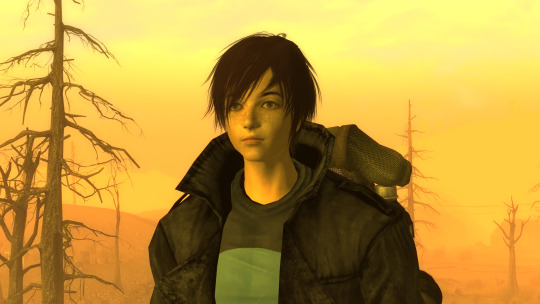
to continue my love of the toyger hair i ported an oblivion port of the hair into fnv since i dun have the knowhow or patience to backport skyrim's nifs into the fo3/fnv era gamebyro engine plus someone made a freckled race (sadly hidden from the nexus as of writing)
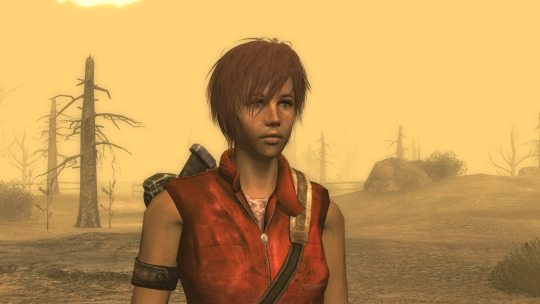
unfortunately the preset for the freckled race was not sufficiently cute enough for me, so i decided to crack open the g.e.c.k. n make a freckled asian race
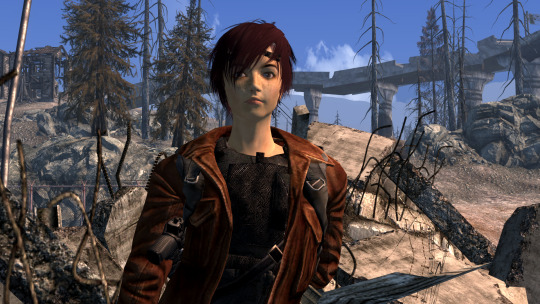
guess more than anything its a hapa race lol dunno where i put the files, so prolly lost to the zone

oh, and the reason why i felt that the lobotomite texture would work for a creepy-cute design is i played a bit (probably for 5 mins before quitting from a trauma loop in DUST) with the playable lobotomite mod and managed to mess with the sliders to make a kinda cute lady. fllatou 4 have toyger will tomboy

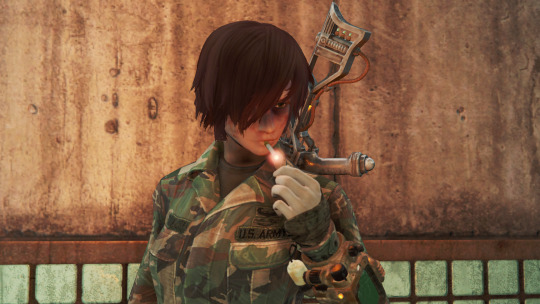
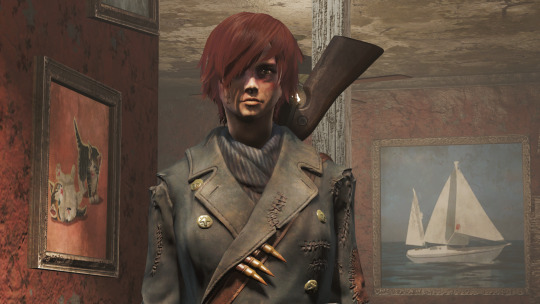
also tried making a tired/sad girl instead of a tomboy

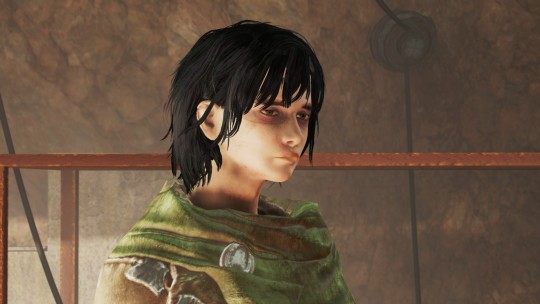
pretty proud of her since she conveys the exact vibe i want


fits with the total desperation of FROST though unfortunately by the time i got done taking a handful of screenshots of her i lost interest in playing also yey not using the toyger hairdo for the umpteenth time
eh why not bonus sims segment i have an unhealthy like for character creators



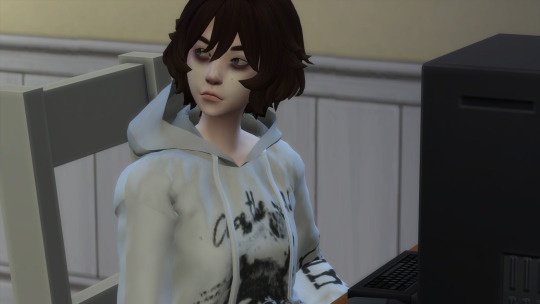
wanted to try making an unconventional lass, ended up with a NEET goblin
think i had that one jewish girl who photo got posted occasionally on 4chins n popopoka's blind girl in mind when i made her
am tired now dunno if i'll do any more posts like this aaaaaaaaaaaaaaaaaaah bye
7 notes
·
View notes
Text
#7
“Crazy Rich Asians: Hapas, Colorism, and Why It’s a Big Deal for Asian-Americans.” YouTube, YouTube, 24 Aug. 2018, www.youtube.com/watch?v=l48X00ali34.
youtube
2:08- 3:32
Youtuber Anna Sterling sits down with journalist and producer Cristina Kim to talk about their thoughts on the movie #CrazyRichAsians. Having a love story based on two Asian characters is huge for the Asian community. The women talk about their own experiences watching love stories based on American actors and actresses and thought it was refreshing to see an Asian man in the lead role of such a big movie. Very light skin actors were the main character in the movie, the only time you will see a darker skinned person is if they are the help and are opening doors or the security guard. They have a conversation about what it means to be Asian. There was controversy surrounding the real life actor of Nick Young, Henry Golding. The criticism was based on him not being of “full Asian descent”. They talk about a side character in the movie who was thought to be a white woman because of how she looked. This brings up the point that a seemingly looking white woman who is Asian is more likely to be playing the role of an Asian woman in an American movie but not the other way around.
2 notes
·
View notes
Text
now doth time waste me
now doth time waste me
by bearwonder
After eight years apart, Aziraphale and Crowley have finally reunited. The distance is hard, but they're figuring things out, slowly but surely.
Then the pandemic hits.
Words: 1760, Chapters: 1/?, Language: English
Series: Part 4 of latch/key
Fandoms: Good Omens - Neil Gaiman & Terry Pratchett, Good Omens (TV)
Rating: Teen And Up Audiences
Warnings: No Archive Warnings Apply
Categories: M/M
Relationships: Aziraphale/Crowley (Good Omens)
Additional Tags: Alternate Universe - Human, COVID Lockdown, cw: 2020, Childhood Friends, Moving In Together, Post-Traumatic Stress Disorder - PTSD, Teacher Aziraphale (Good Omens), Hapa Crowley, Domestic Fluff, HIV Positive Character
From https://ift.tt/iT8CPMb https://archiveofourown.org/works/47665369
4 notes
·
View notes
Text
Entry #2: Film
For the film portion of my journal, I chose to examine the 2018 Marvel movie "Spider-Man: Into the Spider-Verse." It's an animated film that explores the concept of the multiverse, where multiple dimensions and alternate realities coexist. The story centers on Miles Morales, a teenager who gains spider-like superpowers and becomes the Spider-Man of his universe. When a super-collider causes various Spider-People from different dimensions to converge in Miles' world, he must team up with these alternate Spider-Heroes to stop a catastrophic threat and find a way to return them to their respective realities.

When looking at our class topics, "Spider-Man: Into the Spider-Verse" is closely linked to our content regarding multiculturalism and the Hapa Project. This film makes a point to represent diverse identities and experiences throughout the characters in the cast. In particular, it celebrates cultural diversity through its various Spider-People, who come from different backgrounds, such as African-American, Hispanic, and Japanese. Each character brings a unique cultural perspective to the story, reflecting the idea that heroism and personal identity are multifaceted and inclusive. The movie highlights the richness of different cultures and how they contribute to a broader, shared experience. When looking at The Hapa Project, it focuses on the experiences of individuals who are of mixed Asian and Pacific Islander heritage, often exploring themes of identity, belonging, and representation. Miles Morales is of African-American and Puerto Rican descent, embodying a similar sense of mixed cultural identity. His character resonates with the Hapa Project's themes by showcasing how mixed heritage individuals navigate their identities and connect with various cultural influences.

This film also elaborates on racial and ethnic identities beyond the appearance of each character. First, the film juxtaposes culturally specific elements with universal themes. For instance, the depiction of Miles' family life includes cultural references like his father’s role as a police officer, his mother’s protective nature, and the importance of family ties and community. These specifics provide insight into his background while emphasizing universal experiences of family dynamics, adolescence, and self-discovery. Second, the film’s animation style reflects diverse artistic influences, from graffiti and street art associated with urban culture to the more traditional comic book aesthetics. This visual diversity mirrors the variety of cultural backgrounds represented in the characters, making the film a celebration of both cultural and artistic diversity. Lastly, the interactions between characters from different dimensions foster conversations about cultural and generational differences. For example, the older Spider-Man (Peter B. Parker) has to mentor the younger Miles, bridging generational gaps while also navigating cultural nuances. These dynamics can prompt discussions about mentorship, cultural transmission, and the evolving nature of identity.
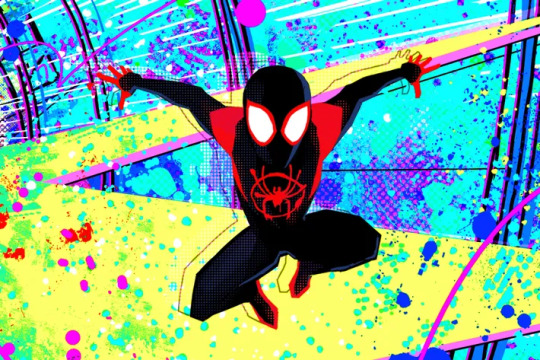
All in all, "Spider-Man: Into the Spider-Verse" is a champion for cultural representation in the film industry, and its story reminds us that while our backgrounds shape our experiences, the essence of heroism and personal growth is something that transcends individual differences.

Works Cited
https://kipfulbeck.com/hapa-me/

https://www.forbes.com/sites/insertcoin/2018/12/16/spider-man-into-the-spider-verse-is-not-just-a-must-see-its-a-must-see-in-theaters/

https://www.imdb.com/title/tt4633694/

https://www.netflix.com/tw-en/title/81002747
https://www.vulture.com/2019/01/how-spider-man-into-the-spider-verse-changed-animation.html

Kip Fulbeck, "The Hapa Project: 10 Years After" (2013)
Susan Saulny, "Black? White? Asian? More Young Americans Choose All of the Above" (2011)
0 notes
Text
TV Show - Princess Weiyoung
Princess Weiyoung is a Chinese TV series that was released in 2016 and directed by Li Huizhu. "Princess Weiyoung'' is a Chinese historical drama series that tells the story of a princess named Feng Xin'er from the Northern Liang Dynasty, who survives a massacre orchestrated by the Chiyun family. She takes on the identity of Li Weiyoung, the daughter of a noble family, to seek revenge and reclaim her rightful place. Through the series, she faces a number of challenges, including romance and political intrigue. The drama is known for its plot, strong performances, and elaborate costumes and sets.

Because this is a Chinese production, the perception the Western world may have of it will be different to non-Western individuals. Relating a bit to Fullbeck’s HAPA project and A Couple in a Cage (Gomez-Pena and Fusco), while Asian-Westerners would take this production well while understanding history and cultural context, Westerners would see it and apply the show production to all Asian-Westerners only. Not applying it to those of mixed descent and only to those who would “look” like the characters on screen. By doing so, they brush off the diversity of those who are from a diverse background and use this to add to the stereotype that all Asians in Asia are dressed the same way, or celebrate the same things. Relative to Fusco and Gomez-Pena’s performance (Couple in a Cage), Westerners would either understand that this is a culture and not the Asian race as a whole, or be quick to accept it and quickly say to the next Asian person that they have “a beautiful culture like in the movies they watch” which excludes mixed descent and minority groups.


My selection of this TV series represents the Chinese East-Asian background. While Chinese culture is the most common knowledge, Chinese culture has a lot of diversity to it as well. This TV show takes place between the Northern and Southern dynasties in China, which was a time of cultural and ethnic diversity. The setting provides a backdrop for discussion on how historical dramas represent complex ethnic backgrounds of China - including the Han Chinese and minorities like the Xianbei people.
We are able to see the main character (Xin’er who becomes Princess Weiyoung) portrayed as a character of mixed ethnicity. She is a princess from Xianbei who adopts the Han Chinese identity. This displays the blending of cultures as well as the challenges faced by individuals of mixed heritage in maintaining their cultural identity while assimilating into another culture. Diversity can be found through clothing, language, and customs depicted throughout the show for their authenticity and representation of different ethnic groups. The global popularity of "Princess Weiyoung" highlights the cross-cultural appeal of Chinese dramas. It invites discussions about how Chinese media is received internationally and how cultural products can serve as a bridge for cross-cultural understanding and appreciation. While the series is in Mandarin, its international distribution involves translation and sub titles which can touch on language barriers and small details that can be lost in translation.


Sources
Fullbeck - Hapa Project: 10 years laterA Savage Performance’ by Guillermo Gomez-Pena and Coco Fusco's "Couple in the Cage" Author(s): Diana Taylor - https://youtu.be/gLX2Lk2tdcw
Images - Pinterest
Weiyoung Poster - https://www.pinterest.com/pin/155303888080148761/
Changru - https://www.pinterest.com/pin/362469470008258352/
Princess Xin 'er - https://www.pinterest.com/pin/2462974787864392/
Prince Nan 'an - https://www.pinterest.com/pin/72831718970378169/
Clothing - https://www.pinterest.com/pin/562175965980362074/
1 note
·
View note
Text

Found this older sketch! I think I only watched 2 episodes, but the main character is a HAPA HAOLE!!! 🍱🥢🥹 AAAA
🔎🥼🧪❔
#Inside job#inside job reagan#reagan ridley#inside job art#HAPA HAOLE!#Art#sketch#AAPI SLAY#artwork#illustration#doodle#artists on tumblr#my art
22 notes
·
View notes
Text
Abbott elementary
Subject and summary:
Abbott elementary follows the daily life of teachers in an underfunded Philadelphia public school. The show starring Quinta Brunson (creator) and her fellow teachers and coworkers dives headfirst into issues that many people of color face through the lens of comedy. Dealing with themes of social status, race, appropriation and gender and the impact of race in education, the shows serve to create an image that is felt within many public schools today.
Abbott Elementary follows a lot of the themes and topics that were present during the course regarding African American culture and what it means to have a pass that culture through a medium. As we have previously talked about in the course with how African Americans are depicted and what is means to have a platform that is written by POC. Take, for example the picture that we examined of Sojourner Truth (Mirzeoff), who was able to take back a medium that didn’t showcase African Americans in a positive light and often with negative undertones. Or, as Deborah Willis said, “it was the first book I had ever seen with “colored” people int it- people that I recognized, people that reminded me of my family.” (Willis). The social impacts of having a show with a majority black cast imparts a sense of representation to those of similar communities, that are of a positive tone. In much of the same ways that HAPA and Godzilla served to combat the stereotypes of Asian Americans, Abbott Elementary brings to African Americans what we’ve all know, there isn’t a single word to describe us as a community as we are all multifaceted. The series highlights the years of systemic polices that only act to hinder minority education is episodes such as “Wrong Delivery” and “William R. Abbott” where they must fight against better funded and supported institutions and come to terms with the racist past that the institution is named for. Abbott elementary goes out of its way to show how multifaceted the African American community can be from having the principal be a black woman, to even how different each character is from one another yet are able to all come together under the common goal of educating the black youth. Just as we examined with the Harlem Renaissance the show, as an art piece, serves as a lens to understanding what black identity is. And embodying this idea of intersectionality can be seen with Barabara Howard. As a senior teacher, she deals with gender, race, and her professional identity; being in a position of “power” with her coworkers by serving as a mentor and mother. And with that authority comes the negative stereotypes she must combat being a minority woman in a position of authority.
Overall Abbott Elementary is a wonderful example of taking difficult subjects and diverse characters and creating a compelling story that allows the viewer to be both entertained but, in many ways, also educated.
Works cited:
“Abbott Elementary.” Wikipedia, 7 Apr. 2022, en.wikipedia.org/wiki/Abbott_Elementary.
Fusco, Coco, and Brian Wallis. Only Skin Deep. ABRAMS, 1 Dec. 2003.
Willis, Deborah. Picturing Us : African American Identity in Photography. New P.,U.S., Jul 96, Biblios, 1994.
“Abbott Elementary Wiki.” Abbottelementary.fandom.com, abbottelementary.fandom.com/wiki/Abbott_Elementary_Wiki.
National Gallery of Art. “Harlem Renaissance.” Www.nga.gov, National Gallery of Art, 2022, www.nga.gov/learn/teachers/lessons-activities/uncovering-america/harlem-renaissance.html.



0 notes
Text
Multimedia Journal #1
I chose to do my multimedia journal on the television show Jane the Virgin. It follows Jane Villanueva, a young Venezuelan American woman who was accidentally artificially inseminated and now is expecting a child. Jane was desperate to break the cycle of single parenthood started by her mother, and now must navigate co-parenting with a rich man. The show is filmed and edited like a telenovela, something that is popular in the Villanueva family.

Photo from IMDB
Jane the Virgin uses themes popular in telenovelas, as well as showing a lot of Venezuelan and Latine culture. Jane tries her best to be a good daughter and granddaughter, follow the rules, and be a good Catholic. This is very similar to the stereotypical “Grace Lee” in The Grace Lee Project. I am unable to add a clip from The Grace Lee Project, but I want to compare the scene at minute 40.26 with the scene at the beginning of the trailer of Jane the Virgin.
youtube
Both scenes compare virginity to something that can be destroyed and is important to protect and save. The parallels were interesting, since Latine culture and Asian culture are very different. But it shows that the expectations that immigrant parents and grandparents have are high. They want their daughters to grow up to be gentle, and to assimilate. Jane the Virgin also tackles topics such as immigration and xenophobia. We see the journey the grandmother, Alba, must take to become a US citizen, and the obstacles that stand in her way. I found the obstacles similar to the anti-immigration laws to prevent Chinese people from immigrating that we read about in A Different Mirror: A History of Multicultural America. Immigration laws were put in place to keep the US majority white, and regardless of race or culture, non-white people were affected and still are to this day.
In Jane the Virgin, Jane’s baby is mixed-race. This means that Jane and her baby’s father must navigate the blending of cultures and cultural differences. They have many disagreements due to cultural and class differences. I think this show can generate conversation about race, gender, and class differences. Jane grew up in a lower-class Latina household full of women, and now has to coparent with an upper-class Italian man. I feel like the blending of cultures relates to The Hapa Project-10 Years Later, where we learn about the identity journeys of mixed-race people. Mateo, Jane’s baby, may have to face a similar journey in navigating the two very different cultures he was born into.

Photo from “Rafael to Find a Job in ‘Jane the Virgin’?”
To summarize this entry of my journal, Jane the Virgin is a show based in Latine culture. Many aspects of Latine life in America are demonstrated through this show, including immigration, xenophobia, and religion. Other topics discussed are gender, and class differences. This show relates to many concepts in our course, especially surrounding immigration laws, intersectionality with gender, and xenophobia to immigrants or non-assimilating Americans. If you have not watched the show, I would encourage you to. There is a character that speaks only Spanish, which is atypical of an American television show. It is a very thought-provoking, as well as entertaining and dramatic show.
Works Cited:
Fulbeck, K. (2006). Part Asian, 100% Hapa. Chronicle Books.
“Jane the Virgin.” IMDb, IMDb.com, m.imdb.com/title/tt3566726/episodes?season=3.
Japco, Sally. “Rafael to Find a Job in ‘Jane the Virgin’?” International Business Times, International Business Times, 29 Nov. 2020, www.ibtimes.com/jane-virgin-season-4-spoilers-rafael-find-job-move-jane-2542878.
Lee, G. (Director). (2005). The Grace Lee Project [Film].
Takaki, R. (2008). A different mirror: A history of multicultural America (1st new ed.). Back Bay Books.
1 note
·
View note
Text
Post #1: Television
The television series Never Have I Ever on Netflix, centers a first-generation Indian teenager who’s struggling to find her way in high school, especially after her father passed away unexpectedly. While dealing with grief, cultural differences, and the usual social dramas of high school, she becomes braver and begins to find herself in some complicated situations due to impulsivity and a need for social acceptance from her peers. This series gives us a holistic perspective of a character’s personality and the challenges and victories that happen during adolescence. From a cultural perspective, this show does a great job of showcasing different parts of Indian culture and fights against common perceptions and stereotypes. Often times, the stereotype of first-generation Asian Americans (especially Indians) is being very academically successful and reserved, under the intense pressure of strict parenting. In this case, the main character, Devi, is very intelligent and does have a strict parent, but so many other sides of her personality are showcased throughout the course of the series. She has a very strong, outgoing, and dominant personality which goes against these pre-conceived perceptions. Not only does it focus on Indian culture, but through Devi’s life experiences, we get to see an unconventional family structure be represented, along with the challenges that come with it. This coming-of-age narrative shows us what it means to be a young woman, dealing with grief and the growing pains of accepting and loving her cultural identity as she becomes an adult. Aside from the narrative itself, it’s great to see Indian actors in the spotlight of a popular Netflix show where a young and impressionable audience is watching.
Last week, we looked at the Hapa project which can connect to these ideas directly. Watching people accept their cultural identities over time reminds me of this series and the journey Devi goes on throughout the course of it. At first, she rejects a lot of her culture, in order to try to fit in at school. While doing this, she realizes that overlooking her identity and pushing it away out of fear doesn’t serve her or her family. The more she learns to embrace it, the more confident and happier she becomes in her own skin.
Devi (left) with her aunt and mother

Sources Cited:
“hapa.me.” Kip Fulbeck, https://kipfulbeck.com/hapa-me/. Accessed 8 July 2024.
Never Have I Ever, created by Mindy Kaling, Netflix, 2020.
Joshi, Tara. “'Beyond Bend It Like Beckham': why Never Have I Ever is a win for Asian representation on screen.” The Guardian, 12 May 2020, https://www.theguardian.com/tv-and-radio/2020/may/12/this-is-no-bend-it-like-beckham-why-never-have-i-ever-is-a-win-for-asian-representation-on-screen. Accessed 9 July 2024.
0 notes
Text
"Jane the Virgin" (Post) Television
Word count: 447
The subject of my film is based on a young Latina woman who is navigating her college life, career, heritage, and lifestyle throughout her whole life. Jane Villanueva, the main character of this Netflix series, holds her religion and family values very near to her heart. She is studying to be a teacher and is engaged to a police officer, and they are remaining celibate until marriage due to her religious practices. Throughout this series, we see that her traditions and love of telenovelas show us that she is appreciative of her culture and all that they stand for. She is very close-knit with her family and lives with her mother and grandmother. She follows religious practices of not living with her fiancé until they are married to abide by her culture's beliefs on sleeping under the same roof before marriage. Religion and family values are very important to her personally and the Latina culture. Although this film effectively portrays her religion, traditions, and family values, stereotypes can be drawn based on her ethnicity by any onlooker.
My selection of media represents racial and ethnic identities relating to images seen in class because both this series and the images shown in class depict ideas of stereotyping and that there is more to a person than what meets the eye. An example of this is the assignment from the Hapa project as it relates to preconceived notions based on visual images the artist provides us. The Hapa project relates to my choice of “Jane the Virgin” series because both elicit to the reader/onlooker that there is more to a person than their skin color, how they dress, or how others see them. In the series “Jane the Virgin”, we begin to understand how and why Jane practices her religion and what it means to her as a person to be proud of her Latina heritage, and how she does this daily. From making traditional meals with her family to practicing her religion and being strong in her faith when it comes to waiting until marriage, she shows people what it means to her to be a Latina woman in the 21st century and all the challenges that come with it. This series, as well as the Hapa project, show cultural diversity by making the world more aware that there are other cultures and traditional practices that others among us practice. Society needs to be more forgiving and accepting of other cultures even when we have preconceived notions based on films we watch, or things people say. Diversity is what makes the world such a wonderful place to be; if everyone was the same the world would be boring.
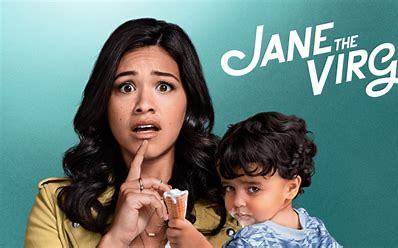
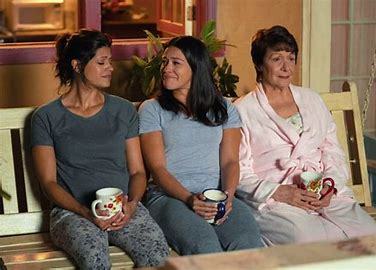
Sources:
Kip Fullbeck, “The Hapa Project: Ten Years After” (The Asian American Literary Review), 1.
Sandy C. “Watch Jane the Virgin Season 5: Now on Netflix.” Hidden Remote, 8 Aug. 2019, hiddenremote.com/2019/08/08/watch-jane-virgin-season-5-now-netflix/.
Therealshelula. “Jane the Virgin.” Therealshelula.Com, 28 Jan. 2018, therealshelula.com/jane-the-virgin/.
Urman, Jennie Snyder. “Watch Jane the Virgin.” Netflix, 12 Oct. 2015, www.netflix.com/title/80027158.
0 notes